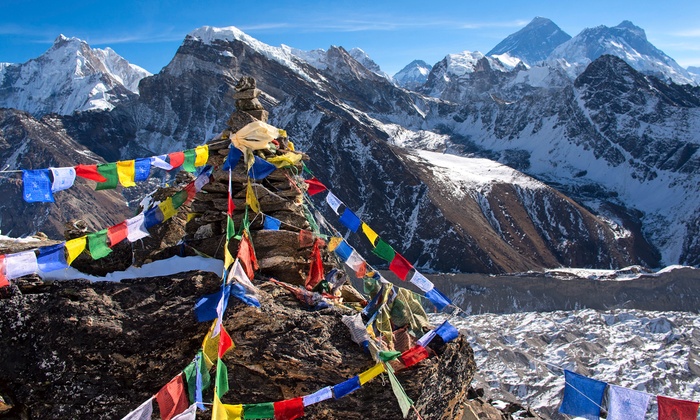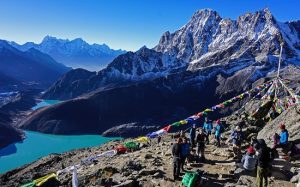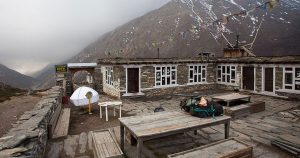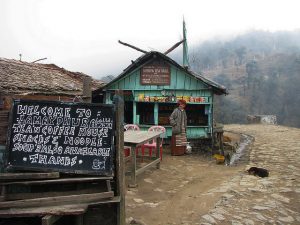
- May 11, 2020
- Uncategorized
Tea Houses during trekking in Nepal.



Tea houses are accommodations built along trekking routes in Nepal that offer basic lodging and meals. Trekking in Himalaya became one of the most popular adventure activities after the successful ascent of Mt. Everest by Tenzing Norgay and Sir Edmond Hillary in 1953.Many Sherpas in the Everest region began to provide accommodation to the trekkers from around the world and gradually accommodation were called Tea Houses. At present, Tea houses in the Annapurna are monitored by the NTNC (Nepal Trust for Nature Conservation) and must meet specific requirements including fixed pricing, standard menus, and limits on how many tea houses can be built along specific routes.
Tea houses have better facilities in lower altitude with private bathroom with built by concrete buildings. However, higher altitude lodges are basic with dormitory room with shared bathroom and simple meal provided by the Tea house. In deep winter people often close tea houses due to extreme weather and less number of trekkers.
typical character of tea houses
Generally tea house has one large communal dining area with a wood burning stove in the center. It’s a great spot to meet other trekkers, exchange stories, warm up, sip tea , play card with your guide, enjoy sunset over the mountains. At higher lodges, some travelers may sleep in the community room on extra cots or even tables due to limited number of room.
PRIVATE AND SHARED ROOMS
Generally Tea houses have two to three twin beds in every room, one overhead light a window and personal lock and key for your door. The beds are generally comfortable with a foam pad, pillow, and a blanket. We recommend travelers to bring a sleeping bag to ensure that you stay warm enough at night, and there is no guarantee of cleanliness when it comes to shared beds and sheets. A sleeping bag, or at least a liner in the warm months, is always a good idea. Its good ensure there are no bed bug, insect or spider before you settle in. A solid pair of earplugs will also help ensure a good night’s sleep.
We always try to reserve single rooms for travelers who request it. At times, the trail gets so crowded that trekkers may be asked by the tea house managers to share rooms to save space. While not ideal, it’s just a fact on the trail as tea houses are limited and everyone needs a place to sleep.
TOILETS AND SHOWERS
Tea houses will either have western style (sit down) toilets or the more traditional squat toilets found across Nepal. You never know which on you’re going to get, but the higher up you trek, it’s more likely to be the latter. Make sure to bring enough toilet paper for your entire trek and always have hand sanitizer nearby. We do not recommend you to take shower in high altitude to avoid getting hyperthermia or cold, you can buy hot water and wipe your body and stay warm. If Tea house is full its best to wake up early to use bathroom and avoid rush hour.
As for showers, they’re generally only available at the lower elevation tea houses and hot water is not always a guarantee. BATE provide tea house with private bathroom and hot shower on your last day of your trek.
ELECTRICITY AND WI-FI
Most of the Tea Houses are run on solar power, providing a renewable and clean way to keep the lights on. Sometimes the power needs to be conserved, especially if it’s cloudy during the day, so expect for some power outages or afternoons where the lights won’t turn on until there’s enough energy to get everyone through the night. The electricity can also be disrupted by bad weather and wind, please do expect to pay small fee to charge your electronic.
Some tea houses do have wifi for a small fee. Expect slow, dial-up-like speeds. Outlets are also available at the larger, concrete tea houses near towns, but just like the lights, may not always be running with electricity during the day. Expect limited to no power the higher up you go, although some tea house owners will let you use their power strip for $1-2/hr. If it’s a huge concern, bring an extra battery pack or small solar charger.
FOOD AND DRINKS
Drinking tea is a culture in Nepali society and welcome by offering tea. If you’re hiking in the rain, snow, or wind it’s the perfect way to relax.
Meals are often cooked over a fire in the kitchen by the owners. While much of the food is delicious, especially the Nepali staples like momos and dal bhat, the quality of the Western style dishes will vary greatly. Here’s a typical list of what you can expect to order in a tea house:
BREAKFAST:
- Tea, coffee, hot chocolate, & juice
- Eggs any style
- Ham/bacon/sausage (if available)
- Toast with butter/jam/honey
- Chapati, Tibetan bread, muesli porridge
- Hash brown potatoes
- Pancakes/crepes
LUNCH & DINNER:
- Pasta & noodles: chow mein, noodle soup, spaghetti, fried rice
- Momos, dal bhat, pakauda
- Popcorn, chips, potatoes
- Spring rolls
- Pizza
- Sandwiches & soup
- Dessert (rice pudding, chocolate pudding, apple or banana fritters)
We highly recommend you to stick with local freshly available meal called Dal Bhat that literally means “lentils and rice.” Mostly vegetarian, but sometimes served with meat on request, this dish is a daily staple across Nepal, this is fresh, safe, healthy and it works well during trekking.
BATE guide often takes order and recommend what to order for breakfast, lunch and dinner, they also ensure food are being cook properly in the kitchen and it is hygienic.
HELPFUL TIPS
Tea houses are one of the unique part of your trekking experience in Nepal and add to the warm and inviting hospitality found throughout this amazing country.
Tea House Trek is the best way to meet and experience local culture, please remember you are contributing local economy as most of your money paid for the trek are spent en-route trek.
Here are a few extra tips for prepping for your tea house stay:
- Have some extra rupees on hand to purchase candy bars, beer, or other snacks.
- The plywood walls separating rooms are very thin – a good pair or two of earplugs can do wonders.
- Fleece pants and comfy sandals are key for post-hike relaxation.
- Portable solar lights can provide some extra light if the electricity goes out (or if you forget a headlamp).
- Cards and books are a great way to pass the time, and don’t forget to play a friendly game of spoons with your guides! Just keep an eye on the spoons, until you realize, there is no spoon….